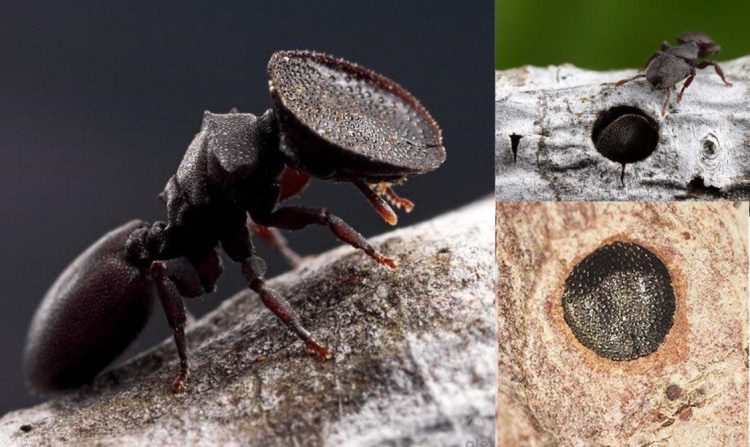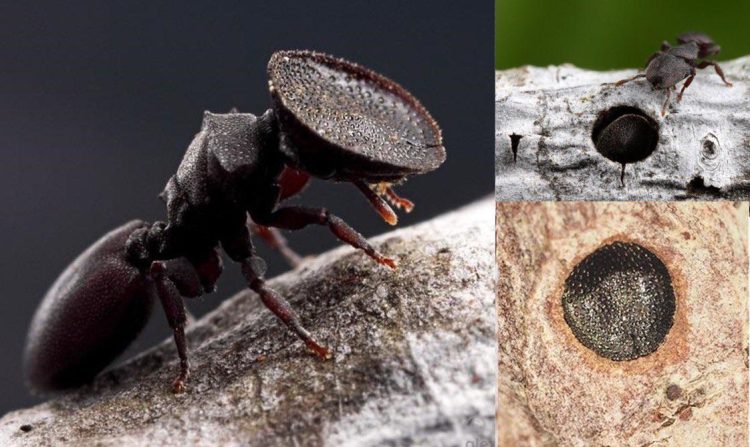The workers of several ant species have large, flattened, and slightly concave heads that they use as plugs to block entrance to their colonies’ nests.
The so-called ‘door head ants’ are soldier ants with armored heads that match both the size and the shape of the entrance to their colonies’ nests almost to perfection. They function as living doors, using their heads to plug shut the nest and only allow access to other members of the colony while keeping unwanted guests out. Door head ants can be found in several ant genera, including Cephalotes and Carebara. How these species developed the exact size and shape as the entries to their nests is the result of millions of years of evolution.

Photo: Reddit
Cephalotes, or turtle ants, have large, round and slightly concave heads that just happen to match the shape and size of the holes left in trees by wood-boring beetles. Such tunnels make a great place for an ant nest, but they also attract a lot of trouble, and it’s the door head ants’ job to keep invading ants, predators and parasites out.
“If you live in a tight tunnel like that, if anything invades the space you’re basically trapped,” Steve Yanoviak, of the University of Louisville, told New Scientist. “It’s sort of a non-aggressive, non-violent way of protecting yourself.”
Unlike many of their enemies, cephalotes have no sting, so they are not the most formidable combatants. This makes the door head soldiers that much more important to the colony, as the safety of the entire community rests on their shoulders, or, their head, rather.
Interestingly, turtle ants aren’t in door-mode at all times. You can see the entrance to their nests open, but as soon as they sense danger, be it a top on the wooden wall of their tunnel, or pheromones of an enemy, the door is immediately plugged shut. Some species even pores on their heads that secrete tangled fibers that resemble fungi, to make them more inconspicuous.
These living doors aren’t impervious to damage, though. Scott Powell of George Washington University studied them and found that many of the soldiers have deep scars on their armored heads, and even bits bitten or torn out of them. But no matter how bad things get, they never back up. They would rather die than put the nest at risk.
“Things have been biting at them and chewing at them and trying to get a purchase to yank them out. They bear the scars of this job of sticking their head in the hole all day long,” Powell told New Scientist.
Powell himself performed an experiment, trying to push one of these door head ants out of position with metallic forceps, and claims that the surgical instrument punctured the ant’s head before it would budge.













